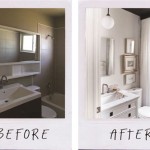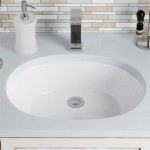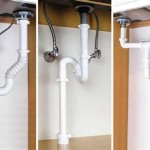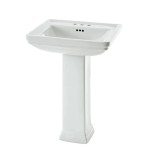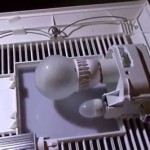Understanding the Bathroom Sink Downpipe: Function, Selection, and Maintenance
The bathroom sink downpipe, often overlooked, plays a crucial role in the efficient and hygienic operation of the entire plumbing system. It is the component responsible for channeling wastewater from the sink basin to the main drainage line. A properly functioning downpipe prevents leaks, foul odors, and potential water damage, ensuring a pleasant and sanitary bathroom environment. This article will delve into the specifics of the bathroom sink downpipe, covering its functions, types, selection criteria, common issues, and essential maintenance practices.
The primary function of the bathroom sink downpipe is to provide a sealed conduit for wastewater to flow from the sink drain to the waste pipe. This process must occur efficiently and without leakage to prevent water damage to the cabinet beneath the sink and the surrounding floor. The downpipe also contributes to preventing sewer gases from entering the bathroom. These gases, often containing methane and hydrogen sulfide, are unpleasant and potentially harmful. The design of the downpipe, often incorporating a trap, is critical for achieving this gas barrier.
Furthermore, the downpipe facilitates the removal of solid debris that may inadvertently enter the sink. While a sink strainer is intended to catch larger objects, smaller particles can still pass through. The downpipe's design can help to trap these particles, preventing them from accumulating further down the drain line and causing blockages. Regular cleaning of the downpipe is essential to maintain its effectiveness in this regard.
Types of Bathroom Sink Downpipes
Bathroom sink downpipes come in various materials and designs, each offering specific advantages and disadvantages. Understanding these differences is essential for selecting the most appropriate downpipe for a given application. Common materials include PVC, ABS, and metal (typically brass or chrome-plated brass).
PVC (Polyvinyl Chloride) downpipes are a popular choice due to their affordability, durability, and resistance to corrosion. PVC is a lightweight material, making it easy to install, and it is readily available in various sizes and configurations. PVC downpipes are generally suitable for residential applications and are compatible with most common plumbing fittings. However, PVC is not as aesthetically pleasing as metal options.
ABS (Acrylonitrile Butadiene Styrene) downpipes are similar to PVC in terms of cost and functionality. ABS is known for its impact resistance, making it less likely to crack or break under stress. ABS pipes are often black in color, which may or may not be desirable depending on the bathroom's design. The connection methods for ABS are similar to those used for PVC, typically solvent welding.
Metal downpipes, particularly those made of brass or chrome-plated brass, offer a more aesthetically pleasing appearance and are often chosen for high-end bathroom designs. Brass is durable and resistant to corrosion, while the chrome plating provides a shiny, attractive finish. Metal downpipes are typically more expensive than PVC or ABS options and may require more specialized tools and skills for installation. However, their durability and visual appeal make them a worthwhile investment for some homeowners.
In terms of design, the most common types of downpipes include P-traps and S-traps. P-traps are generally preferred because they provide a more effective barrier against sewer gases. A P-trap consists of a U-shaped bend in the pipe, which retains a small amount of water after each use. This water acts as a seal, preventing gases from flowing back up the drain line. S-traps, while historically common, are more prone to siphoning, which can empty the water trap and allow sewer gases to enter the bathroom. Building codes in many areas now discourage or prohibit the use of S-traps.
Key Considerations When Selecting a Bathroom Sink Downpipe
Choosing the right bathroom sink downpipe involves careful consideration of several factors. These include the material, design, size, and compatibility with existing plumbing fixtures. Selecting an appropriate downpipe ensures optimal performance and minimizes the risk of future problems.
The material should be chosen based on budget, aesthetic preferences, and the specific environmental conditions in the bathroom. If moisture is a significant concern, corrosion-resistant materials like PVC or brass are recommended. If aesthetics are paramount, a chrome-plated brass downpipe may be the best option, despite the higher cost.
The design, as mentioned earlier, should ideally be a P-trap to provide an effective barrier against sewer gases. Ensure that the trap is properly sized to match the diameter of the drain outlet on the sink and the waste pipe in the wall. Using the wrong size can lead to leaks and drainage problems.
Compatibility with existing plumbing fixtures is another critical consideration. The downpipe must connect securely to both the sink drain and the waste pipe. This typically involves using appropriate fittings and adapters. Before purchasing a downpipe, carefully measure the diameter of the drain outlet and waste pipe, and ensure that the chosen downpipe and fittings are compatible.
Ease of installation should also be considered. PVC and ABS downpipes are generally easier to install than metal options, particularly for those with limited plumbing experience. Metal downpipes may require soldering or other specialized techniques. If unsure, it is best to consult a qualified plumber for assistance.
Finally, consider the overall aesthetics of the bathroom when selecting a downpipe. The downpipe is often visible, so it should complement the style and finish of the other fixtures in the room. Chrome-plated brass downpipes are a popular choice for modern bathrooms, while PVC or ABS options can be concealed behind a vanity cabinet.
Common Problems and Maintenance of Bathroom Sink Downpipes
Even with proper selection and installation, bathroom sink downpipes can experience problems over time. Common issues include leaks, clogs, and the development of foul odors. Regular maintenance is essential to prevent these problems and ensure the downpipe continues to function effectively.
Leaks are often caused by loose connections or damaged seals. Over time, the compression fittings that connect the downpipe to the sink drain and waste pipe can loosen, allowing water to escape. Regularly check these connections and tighten them as needed. If the seals are damaged, they should be replaced promptly. Signs of a leak include water stains on the cabinet beneath the sink, a damp floor, or a musty odor.
Clogs are another common problem. Hair, soap scum, and other debris can accumulate in the downpipe, restricting water flow and eventually causing a complete blockage. To prevent clogs, use a sink strainer to catch hair and other solid particles. Regularly flush the downpipe with hot water to dissolve soap scum and grease. If a clog does occur, try using a plunger to dislodge it. If the plunger is ineffective, the downpipe may need to be disassembled and cleaned manually.
Disassembling the downpipe for cleaning typically involves loosening the compression fittings and carefully removing the sections of pipe. Be sure to place a bucket beneath the downpipe to catch any remaining water. Use a brush or a straightened wire hanger to remove debris from the inside of the pipe. Rinse the pipe thoroughly with water before reassembling it. When reassembling, ensure that all connections are tight and that the seals are in good condition.
Foul odors emanating from the sink drain are often caused by bacteria and organic matter accumulating in the downpipe. To combat these odors, periodically flush the downpipe with a solution of baking soda and vinegar. Pour one cup of baking soda down the drain, followed by one cup of vinegar. Allow the mixture to fizz for 30 minutes, then flush with hot water. This solution helps to break down organic matter and neutralize odors.
In addition to these routine maintenance tasks, it is important to inspect the downpipe regularly for any signs of damage or wear. Cracks, corrosion, or other damage can compromise the integrity of the downpipe and lead to leaks or other problems. If any damage is detected, the downpipe should be repaired or replaced promptly.
Proper maintenance of the bathroom sink downpipe not only prevents costly repairs but also contributes to a healthier and more pleasant bathroom environment. By taking the time to inspect and clean the downpipe regularly, homeowners can ensure that it continues to function efficiently and effectively for years to come.

Simple Drain 1 25 In Rubber Threaded P Trap Bathroom Single Sink Kit 3ea 1v2 Tc0 The Home Depot

Snappytrap Universal Drain Kit For Bathroom Sinks Dk 105 The Home Depot

Snappytrap Universal Drain Kit For Bathroom Sinks Dk 105 The Home Depot

Pop Up Sink Drain Flexible Pipe With Detachable Basket Stopper And Check Valve Retractable 30 Inch P Trap For Bathroom Etc Without Overflow Com

Bathroom Sink Drain Kit Pipe With Detachable Basket Stopper And Check Valve Flexible Retractable 30 Inch For P Trap Etc Overflow Com

Anti Odor Insects With Flexible P Trap Bathroom Sink Drain Pipe Mutoosanitary

Bathroom Sink Drain Kit Pipe With Flexible Expandable P Trap Tube Suitable For Kitchen Garbage Disposal Shampoo Bowls Temu

Anti Odor Insects With Flexible P Trap Bathroom Sink Drain Pipe Mutoosanitary

Bathroom Sink Drains Downpipe Variety Colors To Match For Family Terrace Using Brown A Com

Washbasin Sink Drainpipe Retractable Downpipe Plastic Flexible Expandable For Kitchen Bathroom Bend Pipe Wash Basin Mop Drain Gray Temu
Related Posts
